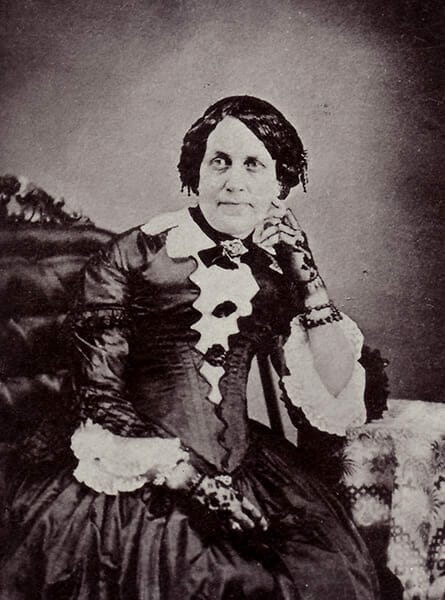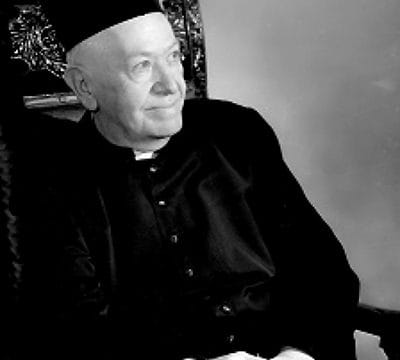Caroline Lee Hentz
 Caroline Lee Hentz
Caroline Lee Hentz (1800-1856) was Alabama‘s first best-selling writer and one of the most popular American women writers of the early nineteenth century. Along with other southern novelists, such as Caroline Gilman and Augusta Jane Evans Wilson, Hentz wrote and helped to popularize women’s domestic fiction. Although she was born in the North and lived in seven different states, Hentz spent 14 years in Alabama (1834-1848) with her husband and four children. Most of her fiction is set in the South, the region she adopted as home and fiercely defended from northern criticism.
Caroline Lee Hentz
Caroline Lee Hentz (1800-1856) was Alabama‘s first best-selling writer and one of the most popular American women writers of the early nineteenth century. Along with other southern novelists, such as Caroline Gilman and Augusta Jane Evans Wilson, Hentz wrote and helped to popularize women’s domestic fiction. Although she was born in the North and lived in seven different states, Hentz spent 14 years in Alabama (1834-1848) with her husband and four children. Most of her fiction is set in the South, the region she adopted as home and fiercely defended from northern criticism.
Born Caroline Lee Whiting on June 1, 1800, in Lancaster, Massachusetts, Hentz was the youngest of John and Orpah Whiting’s eight children. At age 17, she began teaching at the Lancaster Common School. On September 30, 1824, Caroline married Nicholas Marcellus Hentz, a native of Metz, France, who had immigrated to America in 1816. An entomologist, novelist, and artist, Hentz was intellectually gifted but prone to depression and uncontrollable fits of jealousy. Not surprisingly, male jealousy would one day become a recurring theme in Hentz’s fiction.
At the time of their marriage, Nicholas was teaching French at George Bancroft’s Round Hill School in Northampton, Massachusetts. After the family’s initial move to Chapel Hill, North Carolina, in 1826, Caroline began writing a verse drama, De Lara, or The Moorish Bride, and edited the narrative of enslaved George Moses Horton. In 1830, the Hentzes moved to Covington, Kentucky, where Nicholas served as headmaster at a female academy and where Caroline completed De Lara, which won a prize offered by Boston actor and manager William Pelby. De Lara was produced, to favorable reviews, at the Tremont Theater in Boston and the Arch Street Theater in Philadelphia. The following year, two more of her plays were produced, Constance of Werdenberg, or The Forest League, at the Park Theater in New York, and Lamorah, or the Western Wild, in Cincinnati, where the couple had moved in 1832 to oversee another school for girls.
In Cincinnati, Caroline joined a literary and social group to which the future author Harriet Beecher Stowe also belonged. Twenty years later, Stowe’s enormously popular antislavery novel, Uncle Tom’s Cabin (1852), would inspire Hentz to defend slavery and the South by writing a pro-slavery novel, The Planter’s Northern Bride (1854). While in Ohio, Hentz published her first novel, Lovell’s Folly (1833), which included unfavorable portraits of recognizable northern citizens. Fearing libel charges, the publisher quickly withdrew the book from circulation.
In 1834, the Hentzes left Cincinnati following an incident in which Nicholas slapped a man who had sent Caroline a note after a party. Their often stormy marriage near collapse, the Hentzes moved to the frontier town of Florence, Lauderdale County, where they established the Locust Dell Academy. During the next 14 years, the Hentzes operated girls’ schools in Florence (1834-43), Tuscaloosa (1843-45), and Tuskegee (1845-48). Caroline continued to publish, but most of her time was spent assisting her husband at school, cooking meals for the students, and tending to her own children.
In 1848, the Hentzes moved to Columbus, Georgia, to open yet another school, but Nicholas’s rapidly deteriorating mental state prompted them to close the school in 1849. Two years later, the Hentzes moved to Marianna, Florida, where Caroline spent her remaining years caring for her husband and writing stories and novels at a feverish pace to support her family. She rapidly became one of America’s most popular writers. Between 1850 and 1853, Hentz’s books sold more than 93,000 copies, and as late as 1872, the Boston Public Library listed her as one of the three most popular authors of the day.
The popularity of Hentz’s books can be attributed to her mastery in writing sentimental novels. The successful formula for these works centered on an innocent young woman, usually an orphan, who is pursued by an evil suitor through a variety of dangerous episodes until some handsome young man rescues her and joins her in a happy marriage. Other popular ingredients in the genre include narrow escapes, mistaken identity, romantic love and jealousy, religious sentiment and/or conversion, and an inspiring climb from rags to riches.
Although much of the fiction of this genre has been criticized as overly sentimental, newer generations of feminist scholars have reevaluated the challenges it poses, however subtly, to male domination. In Hentz’s Eoline, for example, the heroine rebels against her father by refusing to marry his choice of suitor, even though the penalty is the loss of her inheritance. In the end, Eoline marries the chosen suitor of her own free will. Hentz’s work has also been examined for its promotion of Lost Cause ideology. The Planter’s Northern Bride, for example, is a chilling rebuttal of Uncle Tom’s Cabin. On its surface, the novel offers readers a sentimental marriage plot that covers a deeper theme defending the institution of slavery through the eloquent rhetoric of the main male character, planter Russell Moreland, and in many idyllic scenes of slave life.
The Hentzes did not live long to enjoy Caroline’s success, however. When Nicholas’s health grew worse, he moved to St. Andrews, Florida, to live with their daughter Julia. Caroline stayed in Marianna, traveling to St. Andrews occasionally to tend to her husband. She contracted pneumonia and died on February 11, 1856. Her husband died nine months later. Both are buried in Marianna, Florida. Her sons Thaddeus and Charles would later serve in the Confederate army during the Civil War, and after the war daughter Julia joined other southerners, known as Confederados, who moved to Brazil to reestablish slave-based plantation agriculture in South America.
Selected Works by Caroline Lee Hentz
Lamorah; or, the Western Wild (play, 1832)
Constance of Werdenberg., or, The Forest League (1832)
Lovell’s Folly (1833)
De Lara; or, The Moorish Bride (1843)
Human and Divine Philosophy: A Poem Written for the Erosophic Society of the University of Alabama (1844)
Linda; or, The Young Pilot of the Belle Creole (1850)
Rena; or, The Snow Bird (1851)
Eoline; or, Magnolia Vale; or, The Heiress of Glenmore (1852)
Marcus Warland; or, The Long Moss Spring (1852)
The Banished Son and Other Stories of the Heart (1852)
The Victim of Excitement, The Bosom Serpent, etc. (1853)
Wild Jack; or, The Stolen Child, and Other Stories (1853)
The Planter’s Northern Bride (1854)
Courtship and Marriage; or, The Joys and Sorrows of American Life (1856)
The Lost Daughter and Other Stories of the Heart (1857)
Additional Resources
Cuenca, Carme Manuel. “An Angel in the Plantation: The Economics of Slavery and the Politics of Literary Domesticity in Caroline Lee Hentz’s The Planter’s Northern Bride.” Mississippi Quarterly 51 (Winter 1997): 87-104.
Ellison, Rhoda Coleman. “Caroline Lee Hentz’s Alabama Diary, 1836.” Alabama Review 4 (October 1951): 254-70.
Hentz, Caroline Lee. Unpublished Diary. Hentz Family Papers, Southern Historical Collection, University of North Carolina, Chapel Hill, North Carolina.
Hunt Robert. “A Domesticated Slavery: Political Economy in Caroline Hentz’s Fiction.” Southern Quarterly 34, no. 4 (1996): 25-35.
Lababidi, Iman. “A Study in Domesticity: The Life and Literary Works of Caroline Lee Hentz, 1800-1856.” Ph.D. diss., University of Nottingham, 1989.
Stanesa, Jamie. “Caroline Hentz’s Rereading of Southern Paternalism: Or, Pastoral Naturalism in The Planter’s Northern Bride.” Southern Studies 3 (1992): 221-52.
Wimsatt, Mary Ann. “Caroline Hentz’s Balancing Act.” The Female Tradition in Southern Literature. Ed. Carol S. Manning. Urbana: University of Illinois Press, 1993, pp. 161-75.



